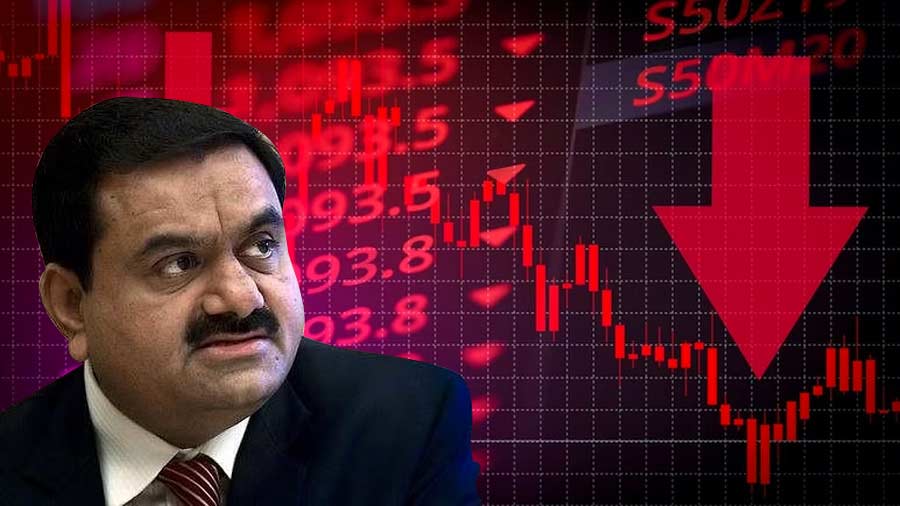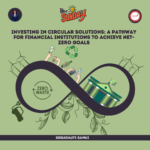
The Adani Group’s dominance in India’s infrastructure sector is undeniable. It may have earned its prominence as a mine developer and port operator, but the group has expanded its reach to control a significant portion of India’s airports, roads, city-gas distribution, and power generation and distribution. In 2019, it won the bid to operate six airports, and in two years, bought a majority stake in the Mumbai airport. With this, Adani ended up controlling one-fourth of India’s air-passenger traffic and one-third of its air-cargo traffic. The group has become one of India’s biggest road developers in recent years, having added 18 highway stretches to its portfolio. It wants to take five companies public over the next three to five years including its airport and road entities. Until then, for their funding requirements, these companies depend on their parent, Adani Enterprises. The airport and road companies rely on Adani Enterprises even for debt. As of March 2022, they accounted for 40% of the Rs 5,000 crore (~US$613 million) debt Adani Enterprises had given its subsidiaries. Once you factor in the group’s presence in city-gas distribution and power generation and distribution, it is not easy to dismiss concerns over the level of dependency on the conglomerate for infrastructure development. The group still has some large projects in the works, such as the greenfield airport in Navi Mumbai. SBI has agreed to lend nearly Rs 12,800 crore (~US$1.6 billion) for the project. While companies such as Adani Power and Adani Ports may generate enough cash to appease lenders, most of the group’s infrastructure businesses are housed in other companies, like Adani Enterprises and Adani Total Gas, which may not be equally positioned.
However, it is also true that investors in Adani Group have grown accustomed to mouth-watering gains since 2020. But recently, they have been faced with a dire reality. On 24th January, US short-seller Hindenburg Research accused the company of stock-price manipulation and accounting fraud. Over the next two trading days, the ten listed Adani companies lost a humungous Rs 4.17 lakh crore (~US$51 billion)—one-fifth of their entire market value. The consequences of this meltdown are both immediate and far-reaching. Although skepticism over Adani companies’ nosebleed valuations is nothing new, but unlike in the past, Hindenburg may have made it impossible to sidestep it now.
In November, when Adani Enterprises set the ball rolling on its Rs 20,000 crore (US$2.5 billion) further public offering (FPO), questions were raised about the stock’s sky-high valuation. On 27th January, when the FPO was opened to the public, its subscription rate was merely 1%. This lack of interest was not only because the stock was ridiculously expensive, but also because it was later available at a lower price on the open market. The Hindenburg report and the subsequent carnage in the Adani stocks had left the FPO in a precarious position. Finally, after the stock crashed 28%, on 1st February, the FPO itself was called off. This event could make investors wary of the group’s future fundraising attempts as well. What’s more, the weightage of Adani stocks (namely Adani Power, Adani Total Gas, Adani Transmission) on the MSCI India Index, which foreign investors closely track, could be reduced. If the prices continue to decline, they could be dropped from this as well as other indices, including the Nifty 50. This could result in funds pulling out millions of dollars from Adani companies. If weightage of the eight Adani stocks in the MSCI index were to be reduced, say by half, they could see outflows to the likes of US$1.5 billion.


Charts for Adani Transmission & Adani Power depicting the stock crash
It’s not just Adani companies that will be affected. As of March 2022, banks had lent over Rs 81,000 crore (~US$9.9 billion) to the top five Adani companies. Public-sector banks have significant exposure to Adani companies, and state-owned Life Insurance Corporation of India Ltd.’s investments in Adani group of companies were worth Rs 72,270 crore (US$9 billion) as of 24th January. On 27th January, as the Adani stocks took a hit, several Indian banks, including SBI, sought to quell concerns of default risks by assuring that their loan exposure to the group was within limits prescribed by the Reserve Bank of India. SBI said that its exposure was secured by cash-generating assets. But this should be taken with a pinch of salt since the group has been alleged to have been using stock manipulation to artificially inflate collateral and borrowing base for loans that it had received by pledging shares as collateral. However, it’s worth noting that Indian state-owned banks account for 30% of Adani Group’s debt, while private banks’ share is under 10%. To be sure, Indian banks haven’t reported any slips in loan servicing by the Adani Group so far. But given the fog of uncertainty surrounding the Adani Group now, it’s likely that any future big borrowings from Indian banks will be subject to a higher level of scrutiny. Also, the Adani Group has been reducing its dependence on Indian banks over the past few years, while the consolidated debt of the top five entities doubled over three years to Rs 2 lakh crore (~US$24.5 billion) in the year ending March 2022, most of the incremental funding came from overseas sources.
As a result, bonds and foreign banks account for a larger part, about 55%, of the Adani Group’s overall borrowings. Low interest rates abroad may have played a role in this, but the group’s overseas exposure has now become a liability as Hindenburg Research, in its report, has disclosed that they hold short positions in Adani Group Companies through US-traded bonds and non-Indian-traded derivatives, along with other non-Indian-traded reference securities. Following the report, Adani bonds listed in the US fell sharply to trade at around 77 cents to the dollar. This could result in foreign lenders losing their appetite to lend to Adani companies, or they could ask for higher interest rates on loans.
Hence going forward, Domestic institutional investors (DIIs), especially mutual funds, are likely to keep their distance from Adani stocks. In the past, mutual funds have mostly kept away from the group’s stocks, likely due to concerns about high valuation—they hold just 1.19% in Adani Enterprises as of December 2022. It is unlikely they will invest heavily in Adani stocks anytime soon, especially given the backlash against state-owned giant LIC and other domestic insurers who participated in the anchor-investor portion of the FPO. LIC has been a conspicuous investor in Adani stocks for quite a while for reasons best known to it, holding 4.23% in Adani Enterprises as of December 2022. But now, with the political knives out after the Hindenburg allegations, DIIs, including LIC and the State Bank of India (SBI), might also want to play it safe.
But while active mutual funds have kept their distance, passive funds don’t have that option. They have to buy shares in companies in the same proportion as the composition of a particular index. The rally in Adani companies helped them find a spot on the MSCI India Index. Adani Enterprises, Adani Total Gas, and Adani Transmission were included in it in May 2021. A year later, thermal-power producer Adani Power Ltd was added too. This means inflows into these companies as passive funds readjust their portfolios to sync with the index. For instance, Adani Power’s inclusion in the index resulted in inflows of an estimated US$150 million. However, these same indices also allow for easy outflows of money. In May 2022, when Adani Green’s weightage in the MSCI India Index was reduced, its stock plunged 12%, resulting in outflows estimated at US$220 million.
In the past, Adani Group has managed to attract foreign investors, even at high valuations. In 2019 and 2021, French energy giant Total Energies SE invested in Adani Gas and Adani Green, respectively, pumping US$3.1 billion into them. In April 2022, Abu Dhabi-based investment firm International Holding Company invested US$2 billion in Adani Enterprises, Adani Green Energy, and Adani Transmission. But these investments came when Adani stocks were on a gravity-defying rally. The scenario is vastly different now.
The controversy will likely have a ripple effect on the planned initial public offerings (IPOs) of the five unlisted Adani companies, scheduled to come out over the next three to five years. The reputational damage and the potential loss of investor funds could also upset the stock surge-fundraise-stock surge cycle that many Adani stocks have enjoyed in recent years and with this trouble in raising equity capital, Adani Enterprises and the group’s reliance on debt will increase as well, which will also likely become more challenging to come by.
However, the Adani group did try to reassure investors by calling the Hindenburg report “maliciously mischievous” and released a detailed rebuttal as well, but it wasn’t of much avail. Probably with the SEBI, the RBI and the Ministry of Corporate Affairs probing into the matter we would soon find out if Adani group was being targeted or if the Hindenburg report’s allegations had merit. But there seems to be equal amount of spotlight on the role of regulators as well – while some believe the regulators should have detected the alleged financial irregularities earlier, given that Adani is a publicly traded company and subject to strict disclosure requirements, others have argued that the regulators have been too lenient in their enforcement of regulations, allowing companies like Adani to engage in fraudulent activities with impunity. Now only the outcome of the investigations will determine the extent to which the regulators have been successful in upholding their mandate to protect investors and the public. It would also help assuage the doubts of foreign investors and rebuild their trust in the Indian markets again.
Hence, to conclude, the Adani-Hindenburg incident highlights the importance of conducting thorough due diligence and research before making investment decisions, particularly in emerging markets, importance of ethical and sustainable business practices, the need for greater transparency and accountability by companies as well as the critical role of regulators in maintaining the integrity and transparency of markets and safeguarding the interests of investors and the public.
-TJEF Editor
Aritra

















Leave a comment